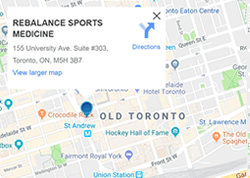Pelvic Fractures: Causes, Symptoms, Treatment and Exercises
 The pelvis is the lower part of the trunk located at the base of the spine. The pelvic skeleton consists of the sacrum, the coccyx, the ischium, the ilium and the.. pubis. A pelvic fracture is a disruption of the bony structures of the pelvis. Pelvic fractures can range in severity from a relatively minor injury to life-threatening. They are often described as “stable” or “unstable” based on how much damage has occurred to the structural integrity of the bony skeleton. The diagnosis of a pelvic fracture will mostly be made by medical imaging.
The pelvis is the lower part of the trunk located at the base of the spine. The pelvic skeleton consists of the sacrum, the coccyx, the ischium, the ilium and the.. pubis. A pelvic fracture is a disruption of the bony structures of the pelvis. Pelvic fractures can range in severity from a relatively minor injury to life-threatening. They are often described as “stable” or “unstable” based on how much damage has occurred to the structural integrity of the bony skeleton. The diagnosis of a pelvic fracture will mostly be made by medical imaging.
What Can Cause a Fracture of the Pelvis?
A pelvic fracture can occur by a low impact/minimal trauma force or by a high energy/ high force impact. Fractures occurring from minimal trauma such as a low fall or a routine activity tend to occur in older individuals whose bones have become weakened by osteoporosis (bone insufficiency). These injuries tend to be stable fractures that do not damage the structural integrity of the pelvis. A pelvic fracture can also result from a high energy force such as that generated during a car/motorcycle collision, fall from a significant height, or a crush accident. Depending on the direction and magnitude of the force these injuries can disrupt the structural integrity of the pelvis and may require surgical treatment.
A pelvic fracture can also occur when a small piece of bone attached to a tendon or ligament gets pulled away from the main part of the bone. This type of fracture is called an avulsion fracture and it is most common in athletes.
How can Physiotherapy, Chiropractic and/or Massage Therapy Help with a Pelvic Fracture?
Physiotherapy is an important part of the rehabilitation in both low impact and high impact pelvic fractures. The amount of the rehabilitation depends on whether the fracture is stable or unstable. Stable fractures are usually managed with conservative care which includes rest, pain control and physiotherapy, chiropractic and massage therapy. Unstable fractures may need to be fixed by surgical treatment. Post-operatively when able, early mobilization is very important because prolonged immobilization can lead to many complications. The goals of physiotherapy should provide the patient with an optimal return to function and ease with activities of daily living. Rehabilitation will focus on improving pain level, strength, flexibility, speed of healing and the motion of the hip, spine and lower extremities. Mobility training is useful to regain the range of motion in the hip, pelvis and lumbar spine after a period of immobilization. Gait retraining may require the physiotherapist or chiropractor to prescribe a walking aid which ideally will be reduced gradually as strength improves.. Balance and proprioception training should also be included in the rehabilitation program. Resistance training should be progressive to improve the muscle strength in the core and lower extremities. Another important goal of physiotherapy and chiropractic care should be to shorten the time needed to return to activity and sport. It is important that you have your injury assessed by a physiotherapist, chiropractor and or massage therapist as soon as possible to start the rehabilitation process and to get educated on possible lifestyle modifications.
What should be Avoided with a Pelvic Fracture?
Depending on the severity of the pelvic fracture and whether it is stable or unstable you may be recommended to avoid different activities. Weight bearing status may need to be adjusted with an unstable fracture. Based on your assessment post injury, your physiotherapist, chiropractor, and or massage therapist will give you recommendations on what to avoid. It is advised that you avoid physical activity and sport that may be harmful and delay healing of the fracture. A return to sport too soon can result in delayed or poor healing of the fracture site or chronic injuries and be detrimental to recovery. It is also not recommended to push through pain and risk further damage to the pelvis.
How Long Does it Take to Recover from a Pelvic Fracture?
The type and severity of the pelvic fracture will determine the length of recovery and medical management. If the fracture is unstable, surgery will most likely be necessary. The treatment and management of each patient requires an individualized plan based on a careful and thorough assessment. It is important to have an assessment by a qualified health care practitioner to receive proper guidance and treatment to speed up the recovery process. If surgery is required, most surgical protocols suggest continued therapy until range of motion and strength gains have plateaued or if the client has returned to normal activities of daily living and occupational demands.
What are Safe Home Exercises I can do Following a Pelvic Fracture?
In patients with surgical treatment, physiotherapy will be initiated with training of small movements, transfers and exercise training. Physiotherapy will start with non-weight bearing exercises. Only when the fracture is stable enough weight bearing exercises can be initiated and will become more challenging.
The following exercises can be started early in the rehabilitation process. The number of repetitions and guidelines can vary with every patient. The exercises will vary in difficulty based on the severity of the pelvic fracture. Please consult with one of our pelvic physiotherapists before starting care as each plan will be different.
Ankle pumps:

Contraction of the quadriceps

Extension of the knee laying down

Knee extension in sitting (with/without resistance)

Abduction of the hip

References:
- Melton LJ 3rd, Sampson JM, Morrey BF, Ilstrup D. Epidemiologic features of pelvic fractures. Clin Orthop. 1981 Mar-Apr. (155):43-7.
- Ooi, Chee Kheong, et al. “Patients with pelvic fracture: what factors are associated with mortality?” International journal of emergency medicine 3.4 (2010): 299-304.
Rebalance Toronto
Rebalance Sports Medicine is a multidisciplinary clinic in downtown Toronto offering physiotherapy, chiropractic, registered massage therapy, sports medicine, naturopathy, Pilates and more.



 What to Expect From Your First Physiotherapy Visit
What to Expect From Your First Physiotherapy Visit The Benefits of Fascial Stretch Therapy [Demo]
The Benefits of Fascial Stretch Therapy [Demo] How Does Physiotherapy Work?
How Does Physiotherapy Work? Best Exercises for Low Back Pain
Best Exercises for Low Back Pain